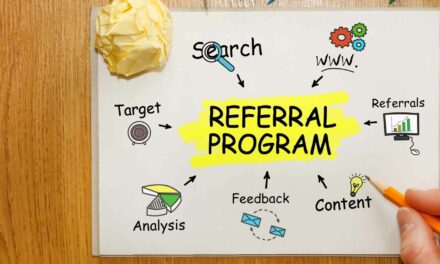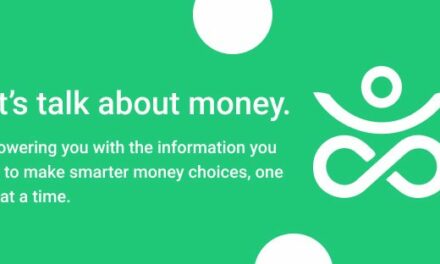For years, I repeated the same mistake in my content business. I resisted opening a free community.
In 2021, I went down the inevitable Web3 rabbit hole and joined far too many communities on Discord. Inspired by them, I finally launched my community and realized how wrong I was to wait.
Let me help you avoid my mistake by explaining my concerns, why they were unfounded, and how free communities can help content entrepreneurs.
#ContentEntrepreneur @MrCabasVidani resisted creating a free community. Now he shares why his concerns were unfounded. #CreatorEconomy #Community Share on XRisks of a free community
A free community usually takes the form of a group on a social media platform, a server on Discord, or a forum like the ones on Circle. In the beginning, you are the community’s growth engine. Members won’t appear automatically. Engagement won’t build itself. You must invite people, start discussions, send reminders to participate, and mention people to encourage replies. And the “beginning” can drag on for months.
Creators are the first growth engine of free communities. You must invite people, start discussions, and encourage replies, says @MrCabasVidani. #CreatorEconomy #ContentBusiness Share on XSeems like a lot of work, right? And without a strategic business model, there’s no return on that investment in sight.
This was the major reason for my resistance. As an entrepreneur, I needed to increase my revenue, and time was limited. I already publish a video each week. My business partner writes a newsletter and occasional blog posts. How much more do we have to give away for free?
There was another fear: what if it fails? It will be a major embarrassment. All the community members will see how incompetent we are. They won’t believe we can help them as promised.
Finally, we had a paid community. Why would someone join that when they could join our free one?
All these fears proved unfounded. Here’s what happens instead when you open a free community:
How much do you actually have to work in your free community?
Yes, you have to carry the community on your shoulders for months. But you can freely adjust the intensity of your effort.
Since the community is new, there will be few people, thus few discussions. That’s the problem, right? Ultimately you want a large, thriving community. But a small community means there isn’t a daily avalanche of posts to moderate and reply to.
You post a discussion prompt, answer a couple of new replies from the previous day, and invite a knowledgeable user for their input on the discussion. In less than 30 minutes each day, you are done.
Spend less than 30 minutes a day with your newly created community. Post a discussion prompt, answer a couple of new replies, and invite input into the discussion, says @MrCabasVidani. #ContentEntrepreneur Share on XThen, it’s just a matter of patience. You can’t force member and engagement growth.
As the numbers go up, your community will require more work. But at that point, it will be easier to envision how to monetize and justify your increased effort.
The unquestionable benefits of a free community
My experience as a member of free communities (including The Tilt’s Discord server) started reassuring me. It also showed the benefits I could get from my free community.
I’ve been running a free community for Italian creators for more than six months. My experience confirms what I saw as a member. Here are the benefits we received and how they dispelled the initial fears.
Always-on, free feedback tool
We have been sending a newsletter for years. We always struggled with engagement.
We changed formats several times, asked explicit questions, and shared personal stories. We got almost no response. Only surveys seemed to get a reaction, but we couldn’t send a survey each week. And they aren’t personal or conversational communication.
In a community, every interaction is a kind of a survey. You can share a piece of content from you or another entity and ask for members’ thoughts. Post a poll to make it easy to give feedback. Learn about members through their spontaneous interactions. Get a deeper understanding of what’s important (and not important) to them as members grow in their trust of the community, so they feel safe to share.
In a community, interactions can act as a feedback tool for your #ContentBusiness, says @MrCabasVidani. #CreatorEconomy Share on XTestbed for content (and not just that)
Your community members often are your most loyal audience. They can have a caretaker feel for your content, products, or services. So bounce ideas off of them, such as:
- Share the key concepts for a blog post and evolve them with the community’s input before you write.
- Ask for podcast guest suggestions.
- Solicit questions for sources you’re interviewing.
By involving your community on the front end, you take out some of the risks for your content creation. You know that at least the core of your audience will like it. They even had a part in developing it.
Involve your #community on the front end, and you take some risk out of your content products, says @MrCabasVidani. #ContentEntrepreneur Share on XBonus: When people are involved in something you publish, they feel seen and heard. They are more likely to engage with and share the content. It’s a flywheel.
But community input shouldn’t stop at content. You can test ideas for a course, find beta testers for a product, or get their opinion on some key parts of your online presence (such as the design, tools, features of your site).
The community itself also can surface monetization opportunities you never imagined.
The shortcut to unparalleled engagement
Engagement is a big challenge for us creators. People love our content. They thank us, they open our emails, and they stay subscribed for years. But most of these people are lurkers: They don’t take a profitable action.
When people engage, they are more likely to buy. And after that first purchase, they keep buying. A free community is the best shortcut to turn lurkers into engaged members who convert into paying customers.
A free community is the best shortcut to turn lurkers into engaged members who convert into paying customers, says @MrCabasVidani. #CreatorEconomy Share on XBeing available through the community is a sign to the community we are there for them, not some creator at arm’s reach. But they also are places where the audience can get to know each other. Even if they don’t become friends, they can see others sharing similar ideas, values, and experiences.
I’ve found that tools like Telegram or Discord naturally encourage interaction. More than forum-like platforms. I think it’s because they’re easy to use, and the chat feed sucks you in.
Yes, I know this has its drawbacks. It’s addictive and distracting. But you can always help members set their notifications so that they aren’t overwhelmed (this is what we did).
How do you start a free community?
Communities are so trendy right now that there are far too many tools to build them. Here are the best options for me.
I hate Facebook. But they have done a good job with groups.
You can find useful groups on many topics. Their features allow in-depth discussions.
Unfortunately, your Facebook group notifications get mixed with a gazillion other things happening on the platform. I often missed notifications from my own groups. So, additional effort is required to keep discussions alive. Otherwise, they’ll be short-lived, like any social post.
Telegram
Telegram is a beautiful messaging app. Many people use it for several different purposes. Hardly a month goes by without some new interesting feature.
Telegram Groups are easy to create, manage, and use. They have one big drawback: You can’t structure conversations.
To carry on a long discussion, you have to remember to use the reply feature, not just send a message to the group. Then you have to click on the snippet before each reply to backtrack the discussion. No threads, no separate channels within a group.
I tested Telegram for our free community. With just 200 members, during the weekends, when people were most active, it was almost impossible to follow long message sequences.
Discord
Thanks to the pandemic and Web3, Discord has gone beyond the gaming niche for which it started. It’s the perfect middle ground between a traditional forum and a messaging app.
What we did for our free community
On our site, we started with a very simple, old-style forum. Then we added a Telegram group, and the intensity of the interaction grew significantly. I think it was due to the chat interface: It feels more engaging even for our “older” audience – most of them are older than 35.
But we took a chance and moved to Discord, despite no one in our audience using it. We thought:
- The chat interface should keep engagement strong.
- Channels would limit overlapping conversations.
- Threads could replace forum threads (although their user experience is far from perfect).
We’ve been using Discord for a couple of months now. It’s been a risky bet: Our audience is based in Italy, a population resistant to novelty.
But after about three months, our hypotheses seem confirmed. We lost some free members, but the level of activity has gone back to what we saw on Telegram.
I’d suggest you give Discord a try.
Community software solution for a price
If you want more advanced community tools, you have multiple solutions that come at a price. When you decide to upgrade, try Circle.so. It doesn’t have a chat feature. But it has many advantages:
- Minimalist and easy to use design
- Structured conversations (similar to Facebook groups)
- Ability to share any content formats
- Endless categories
- Ability to add static content like courses
- Integrations with other creator tools, such as ConvertKit or Gumroad.
It costs $40 a month for the basic tier.
An established competitor is Mighty Networks, which is used by Gumroad and ConvertKit’s communities. As a user, I had a much smoother experience with Circle.
Ready to launch a free community
If you’re on the fence about launching a free community, I hope my experience has convinced you to start one. The potential benefits are far greater than the risks.
Take an hour to see where your audience is already gathering and which platforms they are more comfortable with. Then start your free community and grow your content business with it.
All tools mentioned are included by the author.
Join your fellow creators and entrepreneurs in The Tilt community. It’s free.
About the author
Alberto has been a content entrepreneur since 2010, writing posts, producing videos and podcasts, and selling ebooks, courses, and services. Now he helps content creators become consistent through coaching at https://www.coach.me/albertocabasvidani.










